| Shodo ( Calligraphy ) | |||
|
|
|||
Historical Background The history of Shodo dates back some 3600 years in China. The origin is believed to be the inscriptions on deer antlers and tortoise shells used for rituals. The prototype of today’s brushes was invented around 1000BC, and Chinese characters that are used even to this day were developed almost 2000 years ago. The writing system along with the technologies of making brushes, paper and inksticks were brought to Japan during the 6th and 7th centuries. All Japanese children learn calligraphy in primary school. |
|||
Paraphernalia |
|||
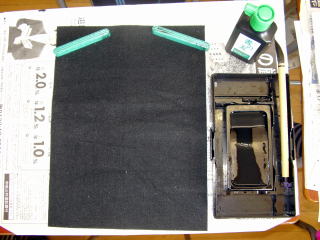 |
There are three basic sizes of brushes which are made of various animal hairs. The inkstone has a smooth surface and depression at one end for holding water. An inkstick with a small amount of water is rubbed on the stone until the water attains the desired blackness. | ||
| You also need rice paper, a paper weight to hold down thin rice paper and a felt sheet to be put under the paper. |  |
||
Manners How a brush is held is very important to get the best result. Hold the brush with the thumb and forefinger and then put the rest of the fingers lightly on the brush handle. The brush must be in the upright position and you must use the entire arm without moving the wrist to stroke lines. Hold down the paper with the other hand and make sure to have your back straight in the proper posture. |
|||
Technique In order to write printed style, there are eight essential stroke methods. |
|||
 |
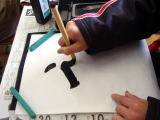 |
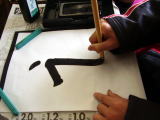 |
 |
| Dot |
Horizontal Stroke |
Vertical Stroke |
Upsweep |
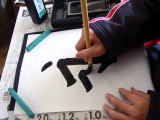 |
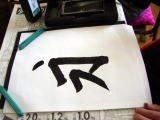 |
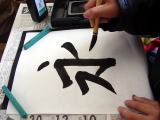 |
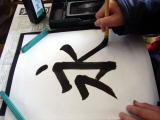 |
| Upper right Sweep |
Left sweep |
Short Sweep |
Right Sweep |
Reporter’s Comment I hope we can continue the long history and the cultural assets of Shodo. I learned that the process of making ink with serenity of mind helps us cultivate mental composure which enables us to focus on what we are about to create on a sheet of paper. |
|||